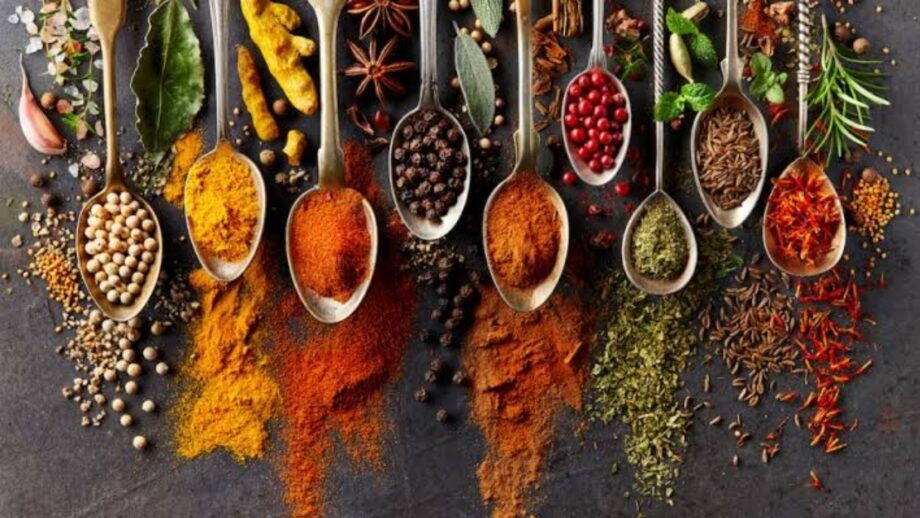In India, there are more than 40 spices. Many are unknown and operated only in certain regions, like a stone flower and garcinia. This list of 11 fundamental herbs is used in all Indian food, including several centuries-old culinary practices from all over the broad subcontinent.
Combining traditional spices to create beautiful cooking is a nearly spiritual act. Indeed, exploring Indian food will significantly boost your cooking repertoire. Below are the 11 top herbs used in Indian cuisine. Getting regular with these spices is a crucial first step in your knowledge.
Cumin (Jira)
Cumin seed is a spice that tastes like caraway or dill and is a staple of Indian cooking and curries. Generally, cumin seeds are best-used whole and fried in oil at the beginning of a dish (Taarka).
Cumin seeds will turn brown fast at a higher heat in 15 seconds. So create sure you don’t burn them, and when they begin to pop, you know they’re done. Ground cumin powder is also an important spice used in India and is one of the critical elements in garam masala spice mix.
Green Cardamom (Choti Elaichi)
You can’t misunderstand the flavour of green Cardamom. It tastes like eucalyptus due to a compound called cineole. It’s excellent fried in hot oil when cooking an Indian dish. Usually, between two and six entire cardamom pods are found in an Indian formula.
Turmeric (Haldi)
Indian food requires turmeric in every food to add a flavour and colour. Turmeric, a ground spice, has a loamy supportive flavour. Of all the herbs used in Indian cooking, this one has substantial health benefits and great yellow colour. Usually, only a teaspoon is used to flavour and colour a dish for a family of four. If used for health goals, make sure to contain at least a dash of black pepper in your recipes. Turmeric is a fantastic anti-inflammatory, but its products are diminished without the piperine from black pepper. For land preparation, the Mahindra 265 tractor model is efficiently used in turmeric farming because it comes in an average price range.
Coriander
Coriander is the origin of cilantro and is one of the essential spices on our list. This seed has an aroma like citrus mixed with some leafy, woody notes and is used in many dishes, including Vindaloo and Madras. Grounding powder just before adding to a sauce is best to use coriander seeds. Along with this, for coriander farming, Massey Ferguson 1035 tractor model is best for productive agriculture.
Garam Masala
India’s most famous seasoning is Garam masala. It’s a combination of dried spices, including pepper, cinnamon, nutmeg, Cardamom, cumin, coriander, tej patta, pepper, and some others. Sometimes it’s used as Garnish.
We should note that garam masala is the most diverse of all spices. It’s like no other spice in that the list of ingredients used to make it vary significantly from region to region, and hence the preference does also. Some include mustard, some have a lot of fennel, but no matter what food you’re consuming in India, this spice, instead of this mix of spices, will likely be an element.
Black Cardamom (Kali Elaichi)
Black cardamom sources have the same eucalyptus scent as green ones and are essential spices on our list. The critical contrast is that before being used in food, they’re dried over a fire, hence are darkened and smoky in taste.
There is no replacement for the unique aroma of black Cardamom. Many dishes use them. Recipes serving about 4 people usually only use one or two black cardamom pods total. In Indian cooking, you’ll usually find these in Biriyani.
Garlic (lahsun)
Garlic is a must for any dish as garlic adds a solid flavour to every Indian dish, mainly for those who eat spicy food.
Using garlic cloves of the size you get in retail garlic, between 4 and 10 cloves in a 4 individual recipe will give you an excellent hearty garlic flavour. For a milder flavour, add it at the beginning when you start frying your onions, or for a sharper taste, add it after your onions are soft, giving the garlic less cooking time.
Asafoetida (Hing)
Asafoetida (Hing) is one of our famous Indian spices. To use hing, you must add it to your pan when your oil is hot. Hing should sizzle for a few seconds 5-20 before adding garlic, onions, or ginger. For a four meal, expect to use between ¼ and half of a teaspoon of hing.
Mustard Seeds (Rai)
Whether it’s brown, yellow or black, Mustard grains are an essential ingredient in Indian cooking, imparting a nutty, sharp note to many curries. But, like many of the whole herbs we’ve noted, they are often favoured for cooking in oil at the beginning of organising a recipe.
Carom (Ajwain)
Each tiny carom fruit has a considerable amount of thymol, which gives it a flavour a bit like thyme but several times more potent. Using carom in bread is common throughout India.
When used in Indian words, it is used in restraint, fried first imparting a smoky flavour, and balances well with cumin seeds, mustard seeds, and other intense flavours like mustard, Cardamom or cumin.
Curry leaves (Kadi Patta)
By no means the least essential Indian spice, curry leaves are one of the most enigmatic Indian spices. While known as a dried herb, it is best used fresh, fried up with onions and your tadka spices to impart a spicy, citrus-like aroma.
Stay connected with us for the more similar blogs.
